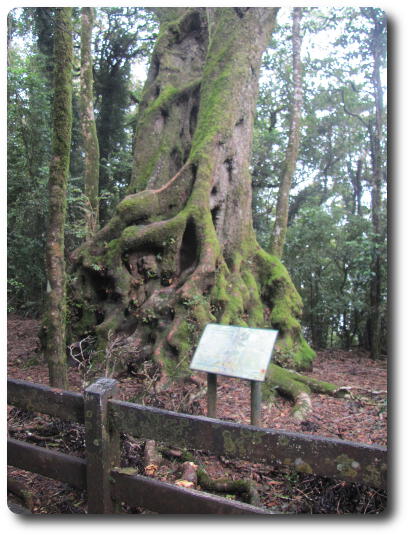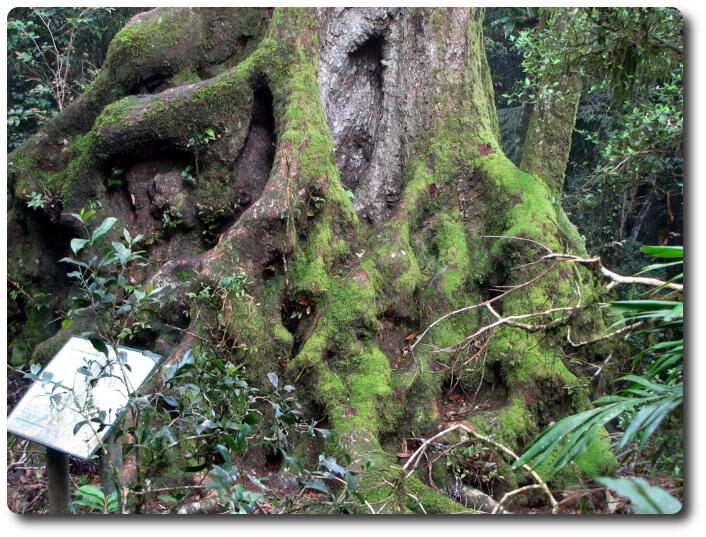One of our remaining links with the ancient ancestors of Gondwana is
the presence of these majestic Antarctic beech
(Nothofagus moorei).
During a wetter, cooler time in Australia, about 50 million
years ago, forests of these trees were widespread across the
continent and provided a habitat for animals, many of which have
long since disappeared from our landscape.
About 38 to 45 million years ago, as Australia drifted north from
Antarctica, our climate cooled and dried, dramatically forcing rain
forests to retreat to isolated areas of the coast. The Tweed
Caldera was one area where Antarctic beech took refuge.
The ring of massive, gnarled trunks you see today has grown from a
single tree. Over many decades, this tree has undergone a process of
coppicing
- the dying and regrowing of new stems. This ring of growth
encircles the site where a single seed began life some 2000 years ago.

The Antarctic beech mentioned above. Note the size of the trunk relative
to the sign and wooden fence. It is inspiring to look at a tree
like this and understand that it may be 2000 years old.

A more detailed view of the base of the Antarctic beech's trunk.
The presence of the moss on the trunk indicates how wet this location is.

